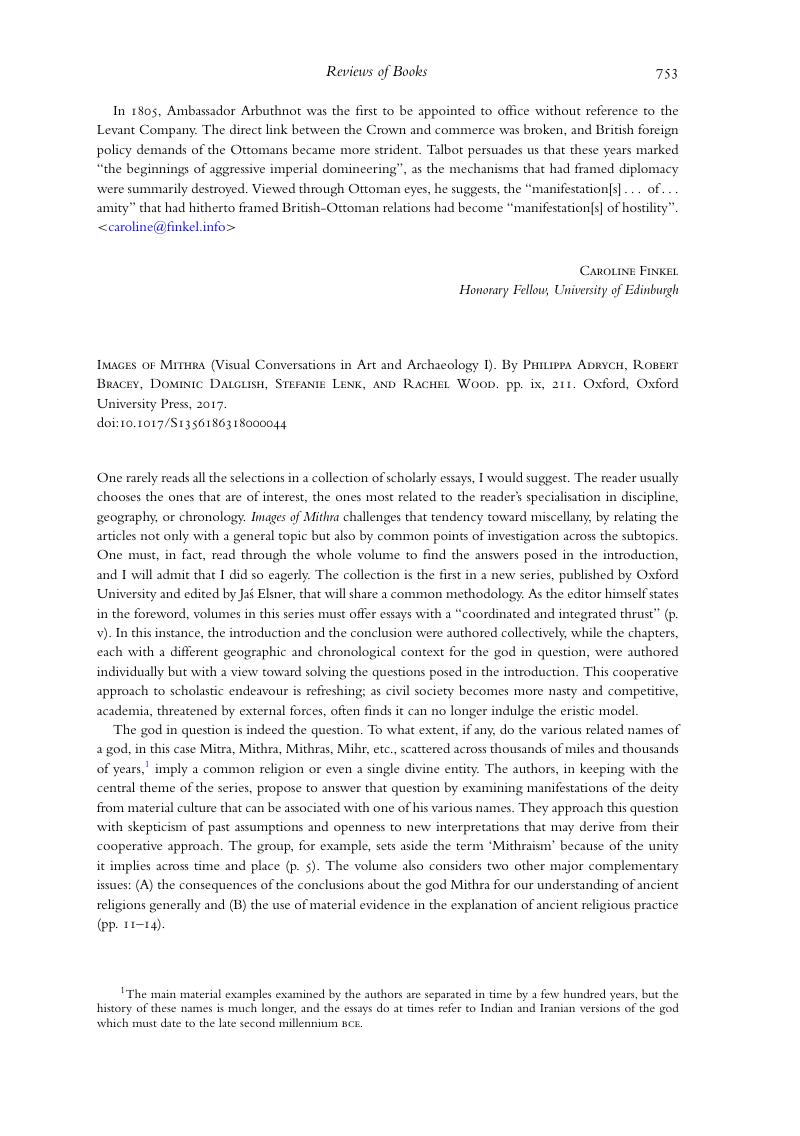No CrossRef data available.
Article contents
Images of Mithra (Visual Conversations in Art and Archaeology I). By Philippa Adrych, Robert Bracey, Dominic Dalglish, Stefanie Lenk, and Rachel Wood. pp. ix, 211. Oxford, Oxford University Press, 2017.
Review products
Published online by Cambridge University Press: 14 February 2018
Abstract

- Type
- Book Review
- Information
- Copyright
- Copyright © The Royal Asiatic Society 2018
References
1 The main material examples examined by the authors are separated in time by a few hundred years, but the history of these names is much longer, and the essays do at times refer to Indian and Iranian versions of the god which must date to the late second millennium bce.
2 I have argued that Mit(h)ra's association with caves and water are items he inherits from Indo-Iranian solar mythology. Sick, D., “Cattle-Theft and the Birth of Mithras: Another Look at Cumont's Vedic Parallel” Journal of Indo-European Studies, 24 (1996), pp. 257–276Google Scholar. See also Srinivasan, D., “The Myth of the Paṇis in the Rig Veda”, JAOS 93 (1973), pp. 44–57Google Scholar.
3 See Gonda, J., The Vedic God Mitra (Leiden, 1972)Google Scholar, especially pp. 54-61. Gonda gives evidence of Mitra's solar qualities but distinguishes him from a solar god per se; see RV 1.115.1, 6.51.1, 7.61.1, 7.63.1, and 10.37.1, for Sūrya as the eye of Mitra.
4 See especially Beck, R., “New thoughts on the genesis of the mysteries of Mithras”, Topoi 11 (2001), pp. 59–76CrossRefGoogle Scholar, and “The Mysteries of Mithras: a New Account of their Genesis”, Journal of Roman Studies 88 (1998) pp. 115-128.
5 See Malandra, W. W., An Introduction to Iranian Religion (Minneapolis, 1983)Google Scholar, especially pp. 16–26, for a summative treatment of these distinctions in the Iranian tradition.


